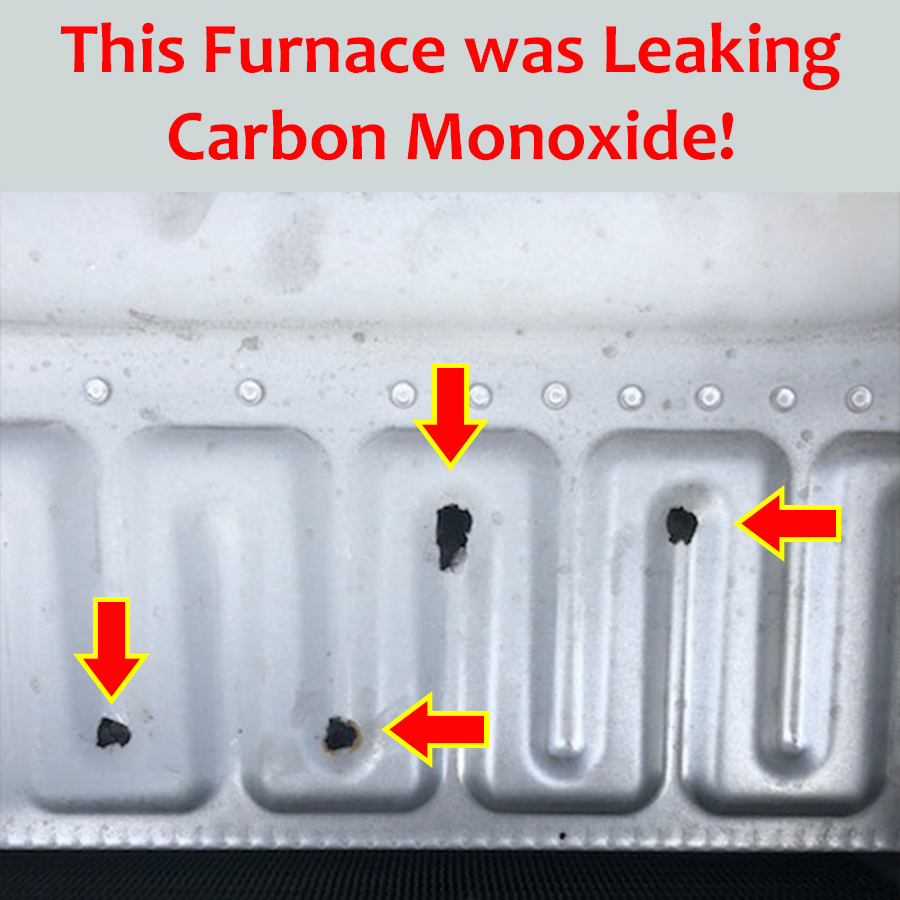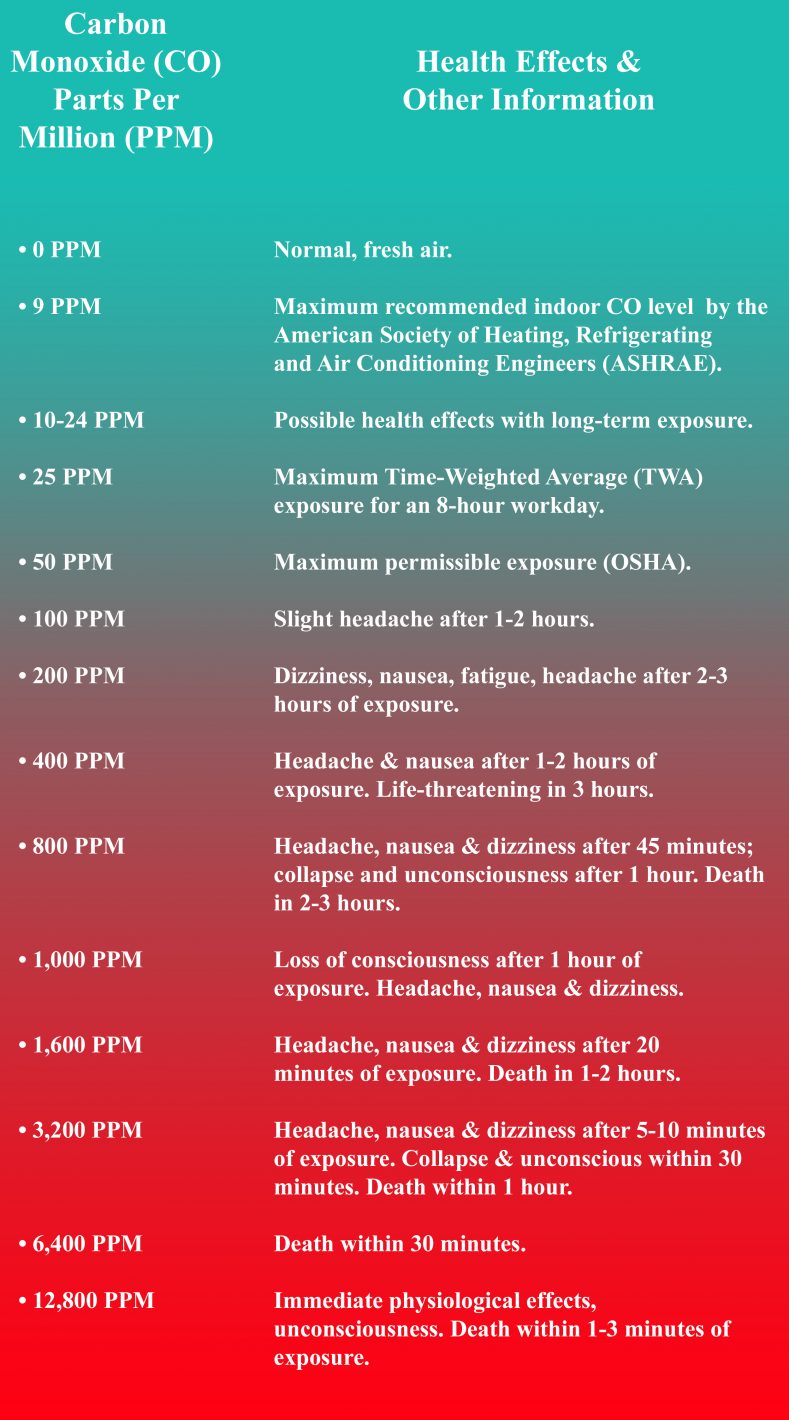Effects of Carbon Monoxide Exposure on the Human Body
Home >
The American Society of Heating, Refrigerating and Air-Conditioning Engineers (ASHRAE) sets the maximum recommended exposure to carbon monoxide at as little as 9 PPM (parts per million), while OSHA sets its level at 50 PPM over an eight-hour workday.
However, there is no safe level of exposure to Carbon Monoxide (CO).
“Every year 600 Americans die due to accidental acute Carbon Monoxide poisoning. Over 20,000 are made ill and treated.” ~Centers for Disease Control
What is Carbon Monoxide (CO)?
Carbon Monoxide (CO), known as the “Silent Killer” is a deadly, colorless, odorless, poisonous gas. It’s produced by the incomplete burning of various fuels, including coal, wood, charcoal, oil, kerosene, propane, and natural gas. The burning of any fuel has the potential to produce carbon monoxide.
Heat exchangers used in home heating systems such as furnaces separate the poisonous gases created during the combustion process from your indoor breathing air. They capture Carbon Monoxide before venting it, usually through a chimney or a pipe … but a cracked heat exchanger can expel deadly gases into your home.
The heat exchanger we just replaced in this furnace is a good example, and one we see dozens of times throughout the course of a normal home heating season.

Why Did My Heat Exchanger Crack?
Like all technologies, heat exchangers eventually fail. The normal process of expansion and contraction as a heat exchanger heats up and cools down weakens it over time, and eventually causes cracks in the metal. Once the heat exchanger is cracked, it’s compromised and will leak harmful gases into your indoor breathing air.
Overheating is often the culprit in systems that break down prematurely. Restricted air flow from poor or infrequent maintenance, an aging system, or even something as simple as a dirty air filter can restrict airflow and result in an overheated heat exchanger.
Heat exchangers should be inspected annually. Light or water passing through a breach is a positive confirmation of a hole or crack. Sanford’s experts can also use a tool called a combustion analyzer to determine if CO is leaking into your home.
We’ve shared a chart below of what happens to the human body at various levels of exposure to Carbon Monoxide. It’s something to take very, very seriously!
To learn more about Carbon Monoxide, read our “Exposing the Silent Killer” series today.

CONTACT US TODAY



As Seen & Heard On







Reach Out to Our Team for More Details
Feel free to call Sanford Temperature Control or fill out the online form for more information. You may also get in touch with our team to schedule an appointment. We look forward to hearing from you.

